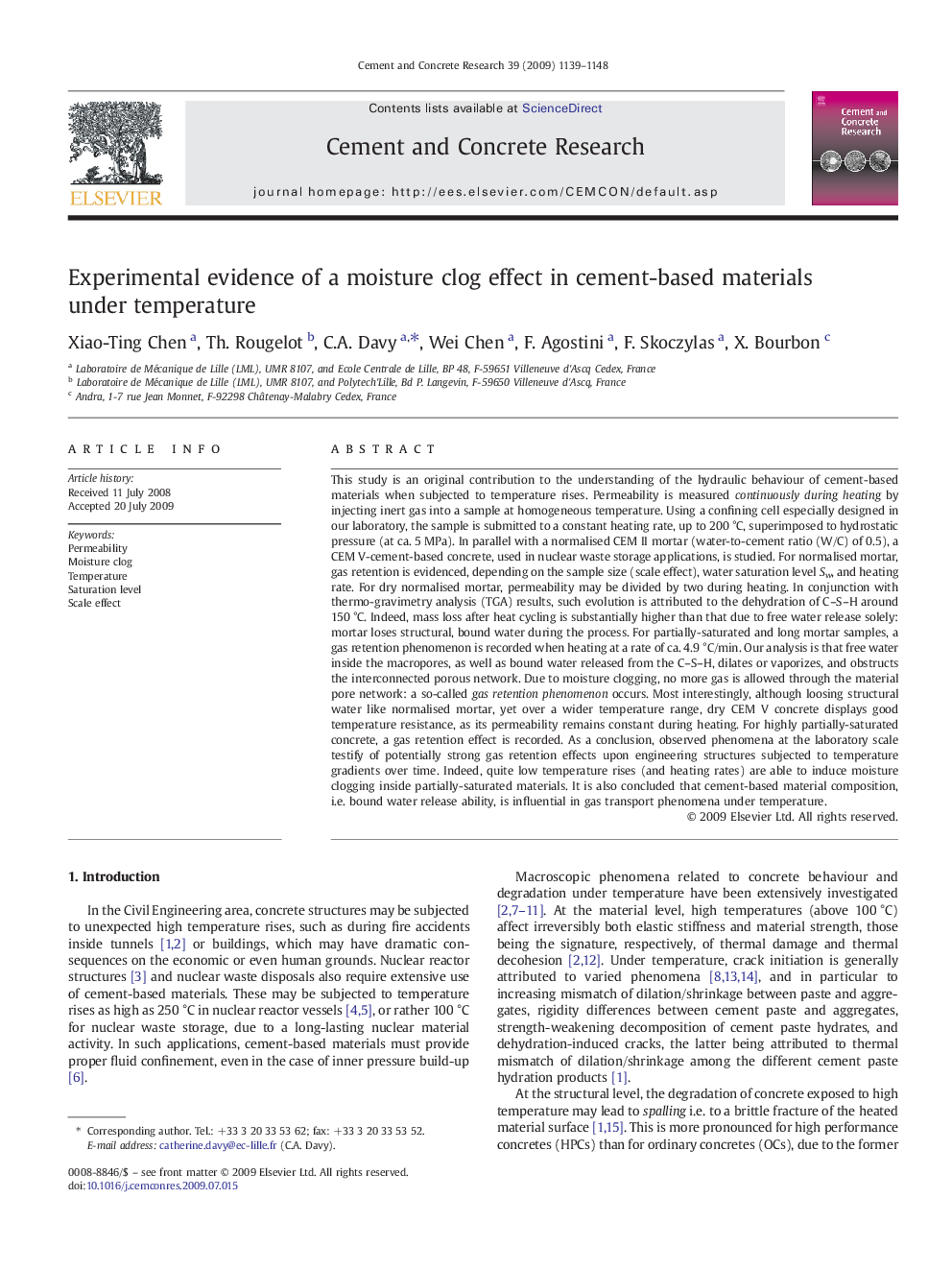| کد مقاله | کد نشریه | سال انتشار | مقاله انگلیسی | نسخه تمام متن |
|---|---|---|---|---|
| 1457238 | 989248 | 2009 | 10 صفحه PDF | دانلود رایگان |

This study is an original contribution to the understanding of the hydraulic behaviour of cement-based materials when subjected to temperature rises. Permeability is measured continuously during heating by injecting inert gas into a sample at homogeneous temperature. Using a confining cell especially designed in our laboratory, the sample is submitted to a constant heating rate, up to 200 °C, superimposed to hydrostatic pressure (at ca. 5 MPa). In parallel with a normalised CEM II mortar (water-to-cement ratio (W/C) of 0.5), a CEM V-cement-based concrete, used in nuclear waste storage applications, is studied. For normalised mortar, gas retention is evidenced, depending on the sample size (scale effect), water saturation level Sw, and heating rate. For dry normalised mortar, permeability may be divided by two during heating. In conjunction with thermo-gravimetry analysis (TGA) results, such evolution is attributed to the dehydration of C–S–H around 150 °C. Indeed, mass loss after heat cycling is substantially higher than that due to free water release solely: mortar loses structural, bound water during the process. For partially-saturated and long mortar samples, a gas retention phenomenon is recorded when heating at a rate of ca. 4.9 °C/min. Our analysis is that free water inside the macropores, as well as bound water released from the C–S–H, dilates or vaporizes, and obstructs the interconnected porous network. Due to moisture clogging, no more gas is allowed through the material pore network: a so-called gas retention phenomenon occurs. Most interestingly, although loosing structural water like normalised mortar, yet over a wider temperature range, dry CEM V concrete displays good temperature resistance, as its permeability remains constant during heating. For highly partially-saturated concrete, a gas retention effect is recorded. As a conclusion, observed phenomena at the laboratory scale testify of potentially strong gas retention effects upon engineering structures subjected to temperature gradients over time. Indeed, quite low temperature rises (and heating rates) are able to induce moisture clogging inside partially-saturated materials. It is also concluded that cement-based material composition, i.e. bound water release ability, is influential in gas transport phenomena under temperature.
Journal: Cement and Concrete Research - Volume 39, Issue 12, December 2009, Pages 1139–1148